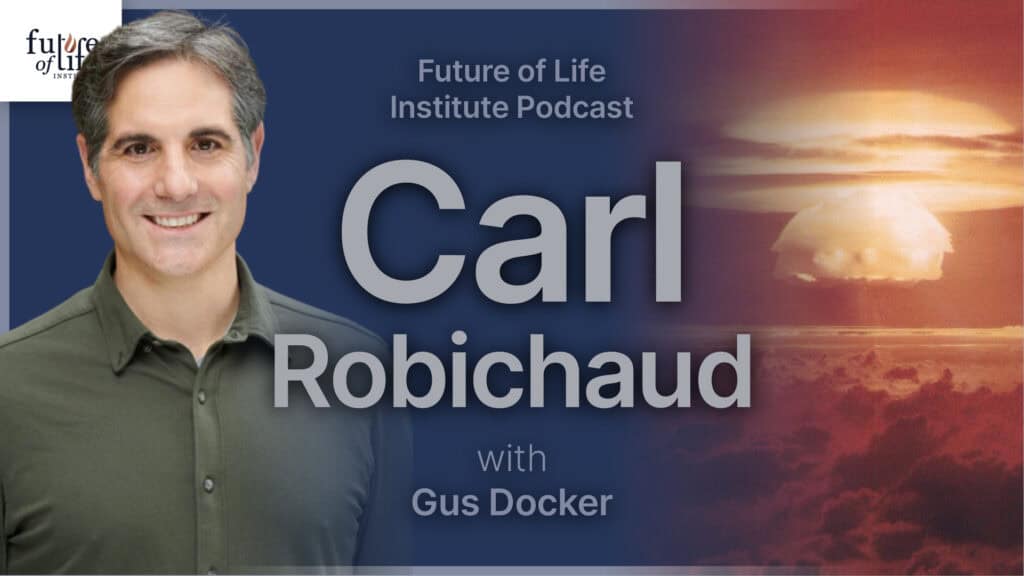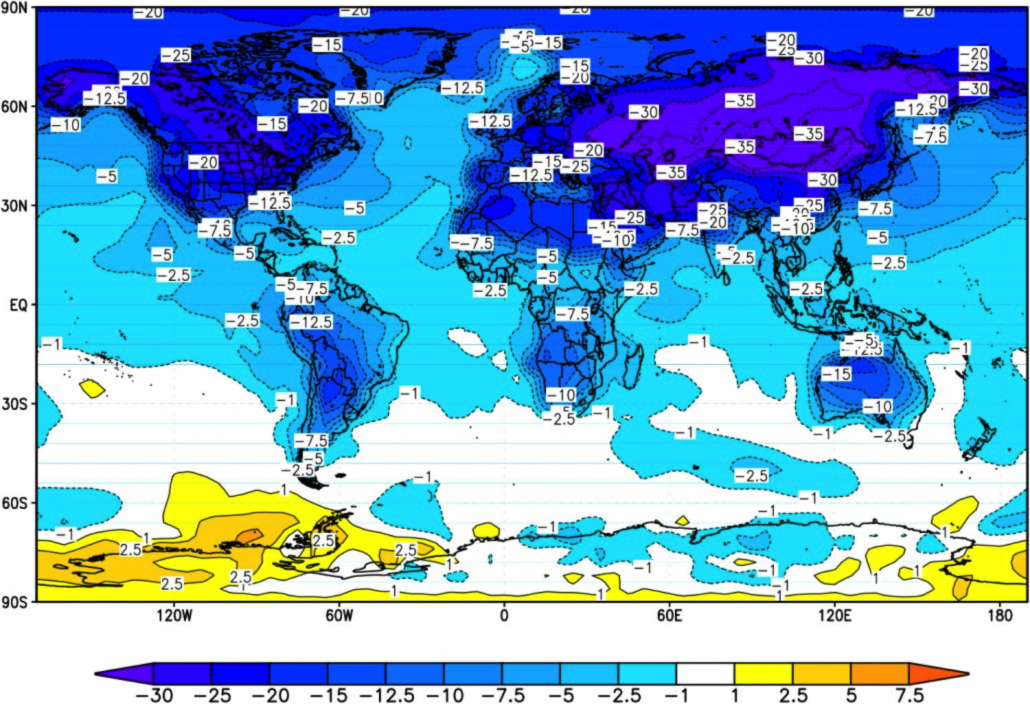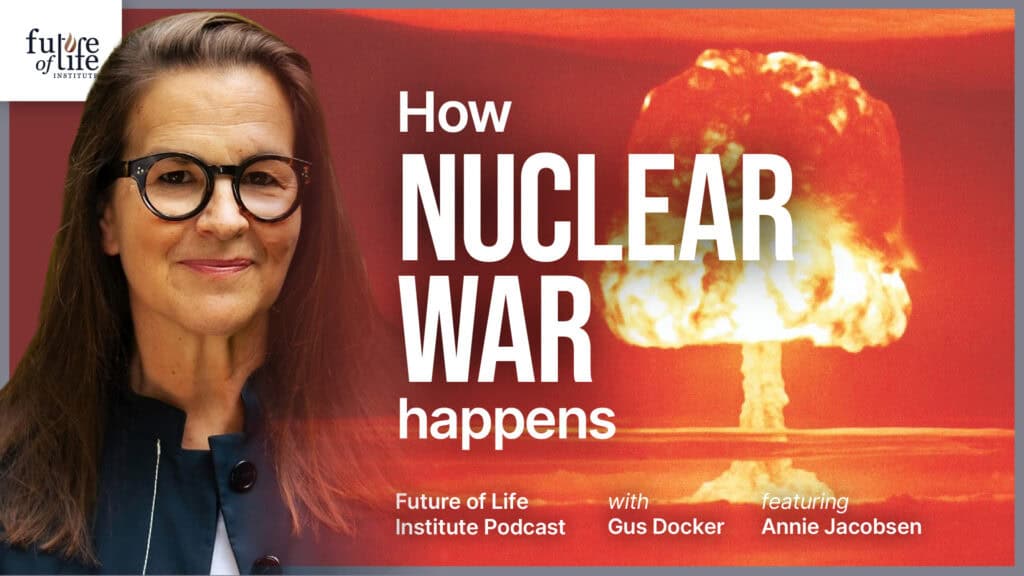The Risk of Nuclear Weapons
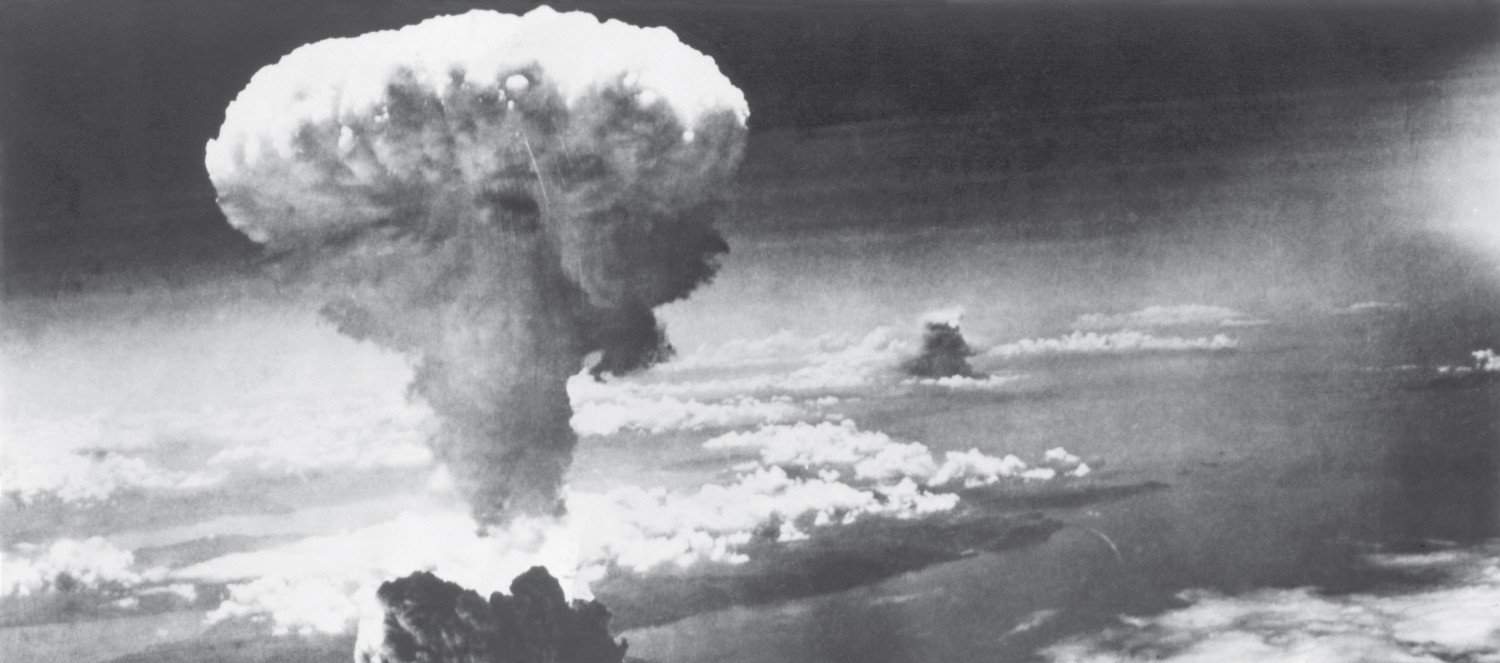
Contents
Click here to see this page in other languages: Chinese ![]() Russian
Russian ![]()
“A nuclear war cannot be won and must never be fought.”
Ronald Reagan, 1984 State of the Union
Despite the end of the Cold War over two decades ago, humanity still has ~13,000 nuclear weapons. Some of these are hundreds of times more powerful than those that obliterated Hiroshima and Nagasaki, and they may be able to create a decade-long nuclear winter that could kill most people on Earth. Yet the superpowers plan to invest over a trillion dollars upgrading their nuclear arsenals, which many experts believe increases the risk of nuclear proliferation, nuclear terrorism, and accidental nuclear war.
What do the experts worry about?
Common concerns span the spectrum from a nuclear terrorist attack against a single city, potentially killing millions of people, to all-out global nuclear war, potentially killing billions. Most experts agree that the average person is more likely to succumb to nuclear war than nuclear terrorism. Nuclear war can potentially kill 1000 times more people than a nuclear terrorist attack (billions rather than millions), but it is certainly not 1000 times less likely than nuclear terrorism. Plus, given the many near-misses that have already occurred, a nuclear war is more likely than many people realize.
How many people would all-out nuclear war kill?
Scientists continue to discover new lethal effects of nuclear war, so it is hard to be confident that we now know them all. First, the radiation risks were underestimated. Victims in the US have received over $2 billion in compensation for radiation exposure that resulted from nuclear testing and uranium handling. Then it was discovered that the electromagnetic pulse from a high-altitude detonation could potentially damage electronics and power grids across thousands of kilometers. A 1979 report by the US Government estimated that all-out war would kill 28%-88% of Americans and 22%-50% of Soviets (150-450 million people with today’s populations), but this was before the risk of nuclear winter was discovered in the 1980’s.
Average cooling (in °C) during the second summer after a full-scale nuclear war between the US and Russia (from Robock et al 2007).
Researchers realized that regardless of whose cities burned, massive amounts of smoke could spread around the globe, blocking out sunlight and transforming summers into winters, much like when asteroids or supervolcanoes caused mass extinctions in the past. However, today’s climate models are far more accurate than those run on the supercomputers of the 1980’s, and we now know that the reports from the 80s significantly underestimated the impact of an extended nuclear winter. The map above published by Robock et al (2007) shows cooling by about 20°C (36°F) in much of the core farming regions of the US, Europe, Russia and China (by 35°C in parts of Russia) for the first two summers, and about half that even a full decade later. Years of near-freezing summer temperatures would eliminate most of our food production. It is hard to predict exactly what would happen if thousands of Earth’s largest cities were reduced to rubble and global infrastructure collapsed, but whatever small fraction of all humans don’t succumb to starvation, hypothermia or epidemics would need to cope with roving, armed gangs desperate for food.
Self-Assured Destruction (SAD)
There are large uncertainties in Nuclear Winter predictions. For example how much smoke is produced and how high up it rises would determine its severity and longevity. Given this uncertainty, there is no guarantee that most people would survive. It has therefore been argued that the traditional nuclear doctrine of Mutual Assured Destruction (MAD) be replaced by Self-Assured Destruction (SAD): even if one of the two superpowers were able to launch its full nuclear arsenal against the other without any retaliation whatsoever, nuclear winter would still assure the attacking country’s self-destruction.
Recent Developments
The nuclear freeze movement, the discovery of nuclear winter, and the end of the Cold War led countries to slash the global nuclear stockpile by about 75%. The superpowers pledged to continue nuclear disarmament in §6 of the Non-Proliferation Treaty, but the last decade has seen little progress, and deteriorating US-Russian relations have recently triggered talk of a second cold war.
The nuclear freeze is thawing. The US, Russia and other powers now plan to invest over $1 trillion to create new, more modern nuclear weapons. Many experts argue that thousands of nuclear warheads are more than enough for effective deterrence, while building new ones weakens national security, makes accidental war more likely and more devastating, encourages additional nations to go nuclear, and gives terrorists easier access to bomb-making materials.
We at FLI agree with these experts, and we therefore oppose the design and production of new nuclear weapons. We also support the removal of nuclear weapons from hair-trigger alert, which further increases the risk of accidental war.
“…if we believe that the spread of nuclear weapons is inevitable, then in some way we are admitting to ourselves that the use of nuclear weapons is inevitable.”
– Barack Obama, 2009
Recommended References
Videos
- TED Talk with Brian Toon: Nuclear Winter
- Minute Physics with Max Tegmark: Why You Should Care About Nukes
- Last Week Tonight with John Oliver: Nuclear Weapons
Blog Posts & Apps
- FLI: 1100 Declassified US Nuclear Targets
- FLI: Trillion Dollar Nukes App
- FLI: Timeline of Nuclear Close Calls
- Union of Concerned Scientists: I Wish I Didn’t Know That – Real-life Tales of Close Calls, Screw Ups, and Nuclear Near Misses
- Union of Concerned Scientists: Close Calls with Nuclear Weapons
- ICAN: Why a Ban
- ICAN: Status of the Treaty on the Prohibition of Nuclear Weapons
- Reaching Critical Will: Documents from the nuclear weapon ban treaty negotiations
Research Papers
- Global food insecurity and famine from reduced crop, marine fishery and livestock production due to climate disruption from nuclear war soot injection
- A Model for the Probability of Nuclear War
- A Model for the Impacts of Nuclear War
- Local Nuclear War, Global Suffering
- Self-Assured Destruction: The Climate Impacts of Nuclear War
- Nuclear winter revisited with a modern climate model and current
nuclear arsenals: Still catastrophic consequences - Asia Treads the Nuclear Path, Unaware That Self-Assured Destruction Would Result from Nuclear War
- Federation of American Scientists: Nuclear Weapons in the Twenty-First Century
Research Collections
- 80,000 Hours: Nuclear Security Problem Profile
- United Nations: Research guide to nuclear weapons
- UNIDIR: A Prohibition on Nuclear Weapons: a guide to the issues
- Federation of American Scientists: Nuclear Weapons
- Nuclear Darkness: The Deadly Consequences of Nuclear War
- Union of Concerned Scientists: Prevent Nuclear War
- International Campaign to Abolish Nuclear Weapons (ICAN): The Facts
- ICAN & PAX: Don’t Bank on the Bomb
- Bruce Schneier: Resources on Existential Risk , p. 90Blog Posts & Apps
- FLI: 1100 Declassified US Nuclear Targets
- FLI: Trillion Dollar Nukes App
- FLI: Timeline of Nuclear Close Calls
- Union of Concerned Scientists: I Wish I Didn’t Know That – Real-life Tales of Close Calls, Screw Ups, and Nuclear Near Misses
- Union of Concerned Scientists: Close Calls with Nuclear Weapons
- ICAN: Why a Ban
- ICAN: Status of the Treaty on the Prohibition of Nuclear Weapons
- Reaching Critical Will: Documents from the nuclear weapon ban treaty negotiations
Organizations
- Don’t Bank on the Bomb: A European effort to discourage investments in companies that help build or upgrade nuclear weapons.
- Defense Threat Reduction Agency: Official U.S. combat support agency for countering weapons of mass destruction, including nuclear, biological, radiological, chemical, and high yield explosive threats.
- Institute for Science and International Security: Analyzes and communicates to the public on the science and policy behind nuclear nonproliferation and related international security issues, with emphasis on tracking nuclear weapons programs worldwide.
- Center for Policy on Emerging Technologies (C-PET): A wide network of knowledgeable professionals who identify, clarify, and prioritize the big questions raised in a future perspective to cultivate a context within which solutions can be developed.
- The Center for Arms Control and Non-Proliferation: National non-partisan, non-profit dedicated to enhancing peace and security through expert policy analysis and thought-provoking research.
- Acronym Institute for Disarmament Diplomacy: Develops and supports multilateral disarmament and security agreements
- Abolition 2000: An international global network of organizations and individuals working for a global treaty to prohibit and eliminate nuclear weapons.
- Cambridge Center for Existential Risk: Multidisciplinary research center within the University of Cambridge to study and mitigate existential risks
- Campaign for Nuclear Disarmament: Advocacy group that seeks nuclear disarmament in Britain and the establishment of an international treaty banning all nuclear weapons
- Federation of American Scientists: Think tank focused on providing analysis and policy recommendations on national and international security issues related to applied science and technology
- Future of Humanity Institute: Oxford-based research organization analyzing big-picture questions for human civilization in an attempt to help shape the future of humanity
- Global Catastrophic Risk Institute: Think tank leading research, education, and professional networking on the full breadth of major global catastrophic risks
- Global Zero: International movement for the elimination of nuclear weapons. Powered by a visionary group of 300 international leaders and experts who support our bold, step-by-step plan to eliminate all nuclear weapons by 2030, the relentless creativity, energy and optimism of young people and half a million citizens worldwide, Global Zero is challenging the 20th century idea of basing national security on the threat of mass destruction.
- Human Survival Project: Seeks to protect humanity from nuclear holocaust and its societal and environmental aftermath; a joint initiative of the University of Sydney Centre for Peace and Conflict Studies at the and People for Nuclear Disarmament
- The International Campaign to Abolish Nuclear Weapons (ICAN): Coalition of non-governmental organizations in one hundred countries promoting adherence to and implementation of the United Nations nuclear weapon ban treaty. This landmark global agreement was adopted in New York on 7 July 2017, and ICAN was awarded the Nobel Peace Prize on December 10, 2017.
- James Martin Center for Nonproliferation Studies: Middlebury College-based organization focused on reducing the spread of weapons of mass destruction and training future nonproliferation experts
- Leverage Research: A team of researchers, inventors, educators, and activists focused on improving the world. Their research includes reducing catastrophic risk from totalitarianism and artificial general intelligence
- Lifeboat Foundation: A non-profit organization encouraging scientific advancement while reducing existential risk and other possibly harmful outcomes from emerging technologies, including nanotechnology, robotics, AI, and genetic engineering
- Mayors for Peace: Close cooperation among the cities that strives to raise international public awareness regarding the need to abolish nuclear weapons. It contributes to the realization of genuine and lasting world peace by working to eliminate starvation and poverty, assist refugees fleeing local conflict, support human rights, protect the environment, and solve the other problems that threaten peaceful coexistence within the human family.
- National Security Archive: Library of declassified U.S. documents related to nuclear weapons, government secrecy, and other issues based at George Washington University; also supports research and investigative journalism
- Nautilus Institute: Assembles professionals and conducts research to help solve threats of nuclear war, urban and energy insecurity, and climate change with a focus on the Asia-Pacific region
- Nuclear Threat Initiative: Non-profit organization focused on strengthening global security by reducing the societal risk posed by nuclear, biological, and chemical weapons
- Outrider Group: With their interactive features and in-depth articles, Outrider Group seeks to educate the public about the risks of nuclear war and climate-induced catastrophe and explain how people can become part of the solution.
- Parliamentarians for Nuclear Non-proliferation and Disarmament (PNND): Non-partisan forum for parliamentarians nationally and internationally to share resources and information, develop cooperative strategies and engage in nuclear nonproliferation and disarmament issues, initiatives and arenas.
- Pax Christi USA (PCUSA): Grounded in the Gospel and Catholic social teaching, PCUSA is a membership organization that rejects war, preparation for war, every form of violence and domination, and personal and systemic racism. As PCUSA, a section of Pax Christi International, we are a Catholic peace and justice movement that seeks to model the Peace of Christ in our witness to the mandate of the nonviolence of the Cross.
- Peace Action: The nation’s largest grassroots peace network with chapters and affiliates in states across the country.
- People for Nuclear Disarmament: A citizens?? group based in Sydney promoting nuclear disarmament and related issues
- Physicians for Social Responsibility (PSR): Working for more than 50 years to create a healthy, just and peaceful world for both the present and future generations. PSR advocates on the issues you care about by addressing the dangers that threaten communities, such as nuclear weapons.
- Ploughshares Fund: Supports analysis and advocacy towards improving global security and peace via reductions in nuclear arsenals
- Program on Science and Global Security: Research group based at Princeton University studying nuclear weapons, biosecurity, and related issues
- Pugwash Conferences on Science and World Affairs : Bring together scientists, academics, and public policy specialists to discuss the latest scientific insight to help reduce threats facing global society arising from science and technology, such as nuclear weapons and other WMDs
- Reaching Critical Will: A Women??s International League for Peace and Freedom program that works to increase the influence of NGOs in UN disarmament processes including for nuclear and other weapons
- Skoll Global Threats Fund: Promotes research, education, governance, and outreach towards confronting global catastrophic risks
- Stimson Center: Washington D.C. based think tank focused on improving global security and reducing weapons of mass destruction
- The Union of Concerned Scientists: Works on developing and implementing innovative, practical solutions to some of our planet’s most pressing problems—from combating global warming and developing sustainable ways to feed, power, and transport ourselves, to fighting misinformation, advancing racial equity, and reducing the threat of nuclear war.
- US Department of Defense Nuclear Posture Review: A legislatively-mandated review that establishes U.S. nuclear policy, strategy, capabilities and force posture for the next five to ten years.
- US National Nuclear Security Administration : Agency within the U.S. Department of Energy charged with managing and securing U.S. nuclear weapons, nuclear nuclear nonproliferation, and naval reactors
- William J. Perry Project: Created by Former US Secretary of Defense William Perry, this project seeks to stimulate an informed and broadly inclusive public conversation about the role of nuclear weapons in today’s world and to work toward a world in which nuclear weapons are never used again.
- Woodrow Wilson International Center for Scholars: Washington D.C. based research center focused on bridging scholars with policy experts in a host of fields, including global environmental change, nuclear proliferation, international security, and global sustainability and resilience
- World Beyond War: Global nonviolent movement to end war and establish a just and sustainable peace.
- World Institute for Nuclear Security: Helps secure nuclear and radioactive materials from theft, unauthorized access, and sabotage.
Many of the organizations listed on this page and their descriptions are from a list compiled by the Global Catastrophic Risk institute; we are most grateful for the efforts that they have put into compiling it. These organizations above all work on nuclear technology issues, though many cover other topics as well. This list is undoubtedly incomplete; please contact us to suggest additions or corrections.
About the Future of Life Institute
The Future of Life Institute (FLI) is a global think tank with a team of 20+ full-time staff operating across the US and Europe. FLI has been working to steer the development of transformative technologies towards benefitting life and away from extreme large-scale risks since its founding in 2014. Find out more about our mission or explore our work.
Related content
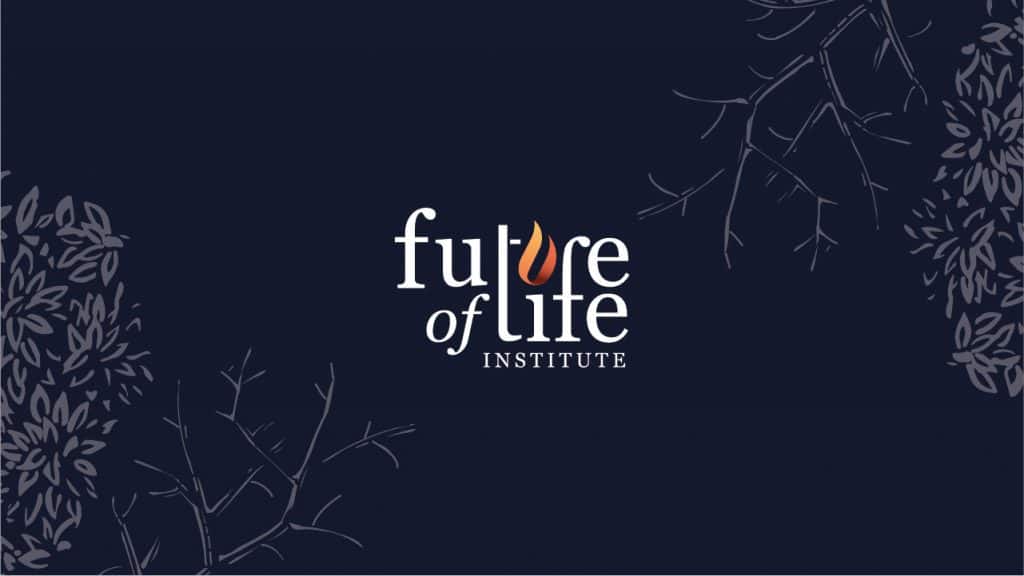
Statement on Superintelligence
